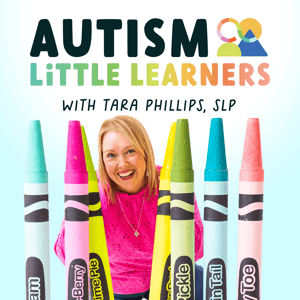Get Kids Language-Ready for Kindergarten
Getting ready for kindergarten doesn’t have to be overwhelming! In this episode, Carrie dives into what it really means to be ‘language-ready’ for the big K and how you can help little ones build those crucial communication skills over the summer—without pressure and with lots of fun.
Whether you’re a parent, teacher, or SLP, you’ll walk away with practical tips you can start using right away to boost your child’s expressive, receptive, and social language abilities. We also share a fantastic summer resource you won’t want to miss!
Listen to the Podcast Here
You can listen to the full podcast episode below:
What Does Language-Ready Really Mean?Carrie kicks things off by defining what it means for a child to be “language-ready” for kindergarten and reminds us that all kids develop at their own pace. You’ll hear:
An overview of typical language expectations for five-year-old’sReassurance for kids who aren’t quite there yetHow to identify key skills to work on this summer Expressive Language Milestones
In this section, we talk about what children should ideally be able to express before starting school, including:
Helpful Tip: Focus on just one expressive goal each day or week to build skills gradually and naturally
Receptive Language Skills to Watch For
Understanding is just as important as speaking! We discuss how to help your child:
Boosting Pre-Literacy & Phonological Awareness
Reading every day is HUGE—and Carrie gives you more tips to build literacy foundations the SLP way, including:
Top Tip: Don’t worry about letters—work on hearing and playing with sounds instead. That’s the real reading foundation!
Social Communication: The Kindergarten Game-Changer
Social skills are a must for kindergarten success! In this part of the episode, Carrie shares how to help your child:
Pro Tip: Practice “hearing no” and waiting their turn—it’s a big part of life in the classroom.
Try Our Virtual Language Summer Camp!
Want a structured, low-pressure way to practice these skills all summer long? Check out our Language Catch-Up Camp! It’s perfect for caregivers who want a roadmap:
Learn more and sign up at: https://www.speechandlanguagekids.com
Got Questions? We’re Here to Help!Join our free community, The Hub, to ask questions, connect with other caregivers and professionals, and get support from Carrie and the team.
Sign up for free: https://hub.speechandlanguagekids.com
Let us know what you’re working on with your little one this summer! And remember—language growth happens step-by-step. You’ve got this.
The post Get Kids Language-Ready for Kindergarten! appeared first on Speech And Language Kids.




































